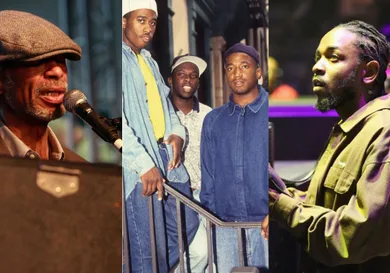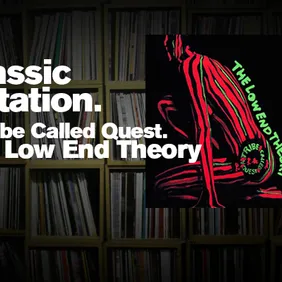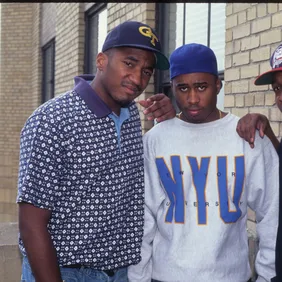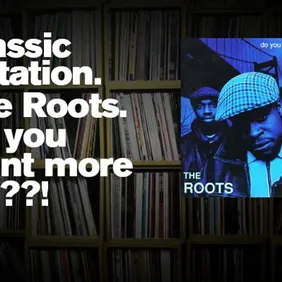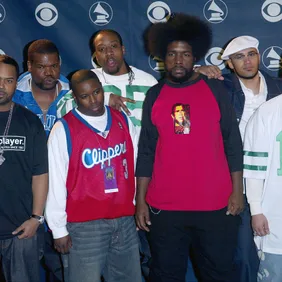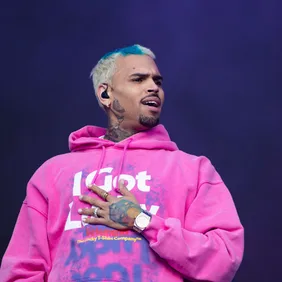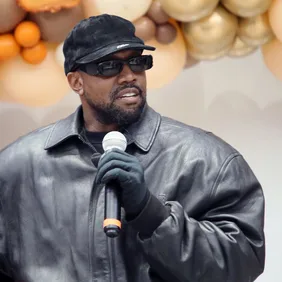Please note that this article is in no way intended to be a comprehensive guide to every major artist who has mixed jazz with hip hop, and I am not at all claiming to be an expert on the subject. I am simply a fan who did some research and would like to pay tribute to some of my favorite artists.
"Back in the days when I was a teenager / Before I had status and before I had a pager / You could find the Abstract listenin' to hip-hop / My pops used to say, it reminded him of Bebop” – A Tribe Called Quest, “Exursions,” 1991
----
Hip Hop has been influenced by jazz since its birth. Jazz artists Gil Scott-Heron and The Last Poets are often credited as some of the first rappers, who in the 1970s were mixing funky rhythms with political spoken word. In 1970, The Last Poets released “When the Revolution Comes,” a spoken-word poem accompanied by conga drums which called for the rejection of white supremacist ideology. In the same year, Gil Scott Heron recorded “The Revolution Will Not Be Televised,” a rapped poem accompanied by a pulsing bassline and jazzy flute that criticized mass media for ignoring the civil rights movement. Both artists had a profound impact on the following generation of hip hop artists, and have been referenced numerous times throughout hip hop’s history.
Some of the hip hop artists who carried on the messages and music of Gil Scott-Heron and the Last Poets were the New York-based Zulu Nation collective, which consisted of Public Enemy, KRS-One, and Rakim, along with their associates the Native Tongues, which included De La Soul, the Jungle Brothers, Queen Latifah and A Tribe Called Quest. Tribe Called Quest’s 1991 album The Low End Theory set the group apart from their contemporaries with its positive, Afrocentric message, clever wordplay, and jazz-sampling production. The album is predominantly mellow, minimalist and bass-heavy, contrasting noticeably with the upbeat tempos and full sounds of albums like Ice Cube's Amerikkka's Most Wanted and Dr. Dre's The Chronic. One of the first hip hop groups to directly collaborate with jazz musicians, Tribe hired jazz bassist Ron Carter to play on “Verses of the Abstract.” On their song “Excursions,” Tribe Called Quest samples The Last Poets preaching “Time is running out on black power!” between bursts of saxophone sampled from Art Blakey and the Jazz Messengers.
In 1993, hip hop group Digable Planets released their debut album Reachin' (A New Refutation of Time and Space), which adopted the Afrofuturist philosophies of cosmic jazz composer Sun Ra and Funkadelic legend George Clinton, conceiving of a future in which arts, sciences and technology are lead by black people. Some of the album’s out-there celestial lyrics include: “Stopped at Pluto to cop some petrol / Met some Klingons and got our things on / Cruisin' warp 6 with Mr. Wiggles in the mix / Hendrix passin' peas, star child get the fix.” Years later, Digable Planets’ Ishmael Butler, whose son happens to be Lil Tracy, linked up with multi-instrumentalist Tendai Maraire to create Shabazz Palaces, an Afrofuturist hip hop project fusing electronic production with African instrumentation and jazz melodies. The Shabazz Palaces album Black Up ends with an interpolation of The Last Poets’ lyrics, “Black is you, black is me, black is us, black is free.”
Jazz-rap hit the mainstream with Nas’ 1994 album Illmatic, which featured DJ Premier sampling jazz trumpeter Donald Byrd for “N.Y. State of Mind,” and Pete Rock sampling jazz pianist Ahmad Jamal for “The World is Yours.” Nas told XXL: “At the time, getting a beat from Pete Rock was like getting a beat from Kanye or Timbaland or f*ckin’ Dre.” Pete Rock & C.L. Smooth’s Mecca and the Soul Brother made waves two years earlier in 1992, with their hit single “They Reminisce Over You” featuring a riff from jazz saxophonist Tom Scott. DJ Premier’s Gang Starr collaborator Guru went on to conceive 1993’s Jazzamatazz, one of the first ever albums to combine live jazz instrumentation with hip hop production and rapping. Jazzamatazz featured collaborations with legendary jazz musicians Lonnie Liston Smith, Branford Marsalis, Ronny Jordan, Donald Byrd and Roy Ayers, accompanying Guru’s smooth bars.
As hip hop was founded upon DJ-ing and sampling, Jazzamatazz’s use of live instrumentation was a reverse-engineering of the traditional hip hop production method, paving the way for one of hip hop’s most famous live bands, The Roots, to break through with 1999’s Things Fall Apart. The album’s hit single “You Got Me” featured singer Erykah Badu, who along with The Roots, D’Angelo, Common, Talib Kweli, Mos Def, Bilal, J Dilla and Q-Tip, made up a new collective of artists inspired by jazz and hip hop called The Soulquarians. These artists, many of whom were previous members of the Native Tongues, helped birth the genre of neo-soul, a cousin to jazz-rap that brought live musicianship, conscious lyrics, and woman empowerment to contemporary R&B. Common opens his DJ Premier-produced song “The 6th Sense” from 2000’s Water For Chocolate by interpolating Gil Scott-Heron’s lyrics, “The revolution will not be televised / The revolution is here / Yeah, it's Common Sense, with DJ Premier.” Mos Def and Talib Kweli also reference “The Revolution Will Not Be Televised” on their song “Little Brother,” produced by J Dilla.
While many producers at the time would quantize their beats, lining up drum samples perfectly on time with the measure to create an exact, rigid pattern, J Dilla played samples on his drum machine in real time by hand, adopting the loose swing rhythms of jazz for hip hop. “He's the producer that makes you change the way you play,” jazz pianist Robert Glasper said about J Dilla. Glasper became famous in the late 2000s for innovating a Dilla-inspired style of piano performance, playing chords suddenly and repetitively, as if they were being triggered on a sampler machine. Glasper’s technique marked one of the first instances in which jazz musicians began borrowing from hip producers, rather than the other way around. In addition to working with the Soulquarians, Dilla produced for LA group The Pharcyde, was one third of the Detroit-based Slum Village, and created a series of experimental solo albums under his own name, before tragically dying of a rare blood disorder at the age of 32. His last album Donuts was released on Stones Throw Records in 2006.
While the Native Tongues and Soulquarians were predominantly based in the East Coast, West Coast label Stones Throw played a pivotal role in the popularization of jazz-rap on the other side of the States. In 1998, the label signed Madlib, nephew of jazz trumpeter Jon Faddis, and a beat-making prodigy who sampled his first song at 11 years old. Madlib received broad acclaim for his 2003 album Shades of Blue, for which he remixed tracks from the archive of the legendary jazz label Blue Note Records. In 2004, Madlib linked up with the masked “super villain” rapper MF Doom for Madvillainy, a groundbreaking album that combined off-time Dilla-inspired production with Doom’s equally loose, stream-of-conscious style flow. Other Stones Throw members that would go on to make innovations in jazz-rap include Knwxledge, Karriem Riggins, Dam-Funk, Aloe Blacc, Guilty Simpson and Mndsgn.
Around the block from Stones Throw, another LA-based label called Brainfeeder emerged in the late 2000s as the home for some of today’s most prominent figures in jazz-hip hop fusions. Founded in 2008 by Flying Lotus, Brainfeeder grew out of the famous LA Beat Scene, signing experimental beatmakers such as Ras G, Samiyam, Tokimonsta, Lapalux, Teebs, and Daedelus, along with formally-trained jazz musicians Thundercat and Kamasi Washington. The nephew of legendary saxophonist John Coltrane and jazz harpist Alice Coltrane, Flying Lotus reinvented the jazz-hip hop landscape with his 2010 album Cosmogramma. Following in the Afrofuturist footsteps of Sun Ra, George Clinton and Digable Planets, Cosmogramma is a far-out celestial odyssey, featuring intergalactic electronic beats like “Do The Astral Plane” and “Galaxy in Janaki,” infused with the harp of Alice Coltrane, saxophone of Ravi Coltrane, and electric bass of Thundercat. In 2014, Flying Lotus released You’re Dead, the follow-up to Cosmogramma which featured Kendrick Lamar rapping on the frenetic electro-jazz single “Never Catch Me.”
“Never Catch Me” was a striking departure for Kendrick, whose 2012 classic Good Kid, M.A.A.D. City had a much more traditional West Coast hip hop sound, and a sign of things to come for the Compton rapper in the near future. In 2015, Kendrick dropped To Pimp a Butterfly, a bold, experimental album that assembled a supergroup of today’s greatest jazz musicians to handle the production. Butterfly’s team included jazz musicians Robert Glasper, Thundercat, Kamasi Washington, and Terrace Martin; beatmakers including Flying Lotus and Stones Throw’s Knxwledge; Soulquarian singer Bilal; futuristic funk icon George Clinton; and New York jazz-rap legend Pete Rock, as well as Kendrick's longtime collaborators Dr. Dre, Sounwave, and Boi-1da. Carrying on the political tradition of jazz-rap artists like Gil Scott-Heron and A Tribe Called Quest, Kendrick's single “Alright” became a rallying cry for The Black Lives Matter Movement, protesting police brutality with the lyrics “We hate Po-po, wanna kill us dead in the street for sho’.” To Pimp a Butterfly introduced jazz to a new generation of young music-listeners, and its impact has largely set the stage for the state of jazz and hip hop in 2018.
Today, jazz in hip hop is as alive as it’s ever been. Knwxledge-collaborator Anderson .Paak is drawing upon his years of experience playing the drum kit to bridge jazz influences with hip hop, soul and funk, much like the Soulquarians did in their day. The Canadian band BadBadNotGood is adopting their formal training in jazz for hip hop collaborations with everybody from Kendrick Lamar to Ghostface Killah and MF Doom. Chicago artists Chance the Rapper, Noname, Smino, Ravyn Lenae, Saba, Jamila Woods, and Mick Jenkins have developed their own signature scene that brings together jazz and hip hop with strong gospel influences. As jazz and hip hop continue to spread and diversify, it is virtually impossible to label “jazz-rap” as one specific genre anymore (if it ever was in the first place), but the lineage of jazz-infused hip hop from Gil Scott-Heron and The Last Poets, to the Native Tongues and Digable Planets, to the Soulquarians, Madlib, Flying Lotus, and Kendrick Lamar, remains widely recognized and influential today.
----
And one final note from the author: I would like to again reiterate that this article is not at all intended to be a complete timeline of jazz-rap, and I am in no way claiming to be an authority on the subject. There are plenty of important artists this article overlooked, so please leave a comment with some of your favorite artists who have explored the intersection of jazz and hip hop! If you want to listen to some of the artists I mentioned in this article, please check out the this Spotify playlist. I will be adding your suggestions in the comments to the playlist.
